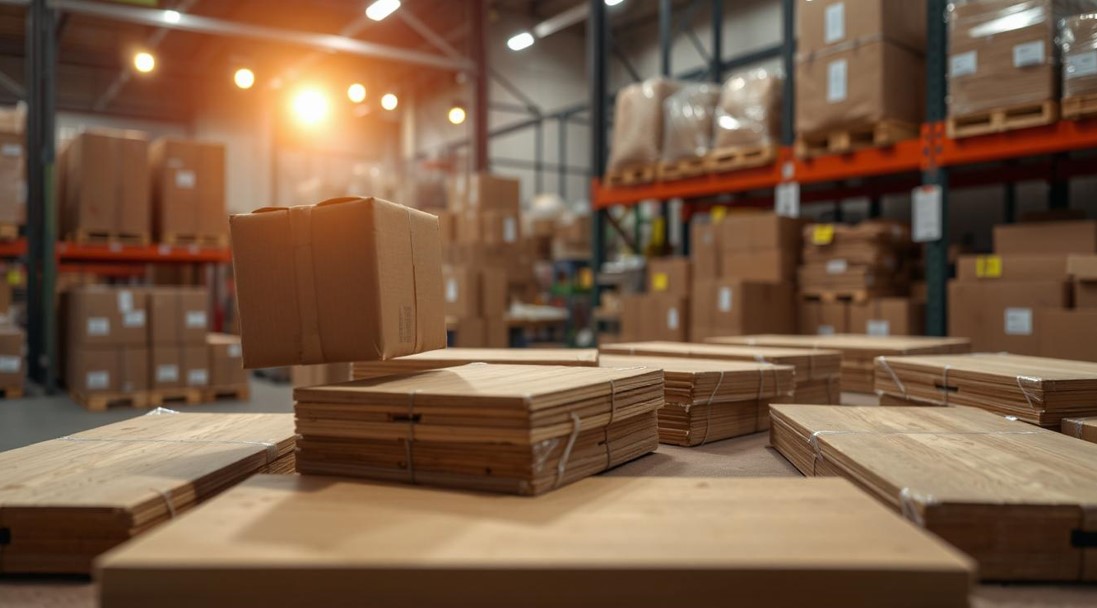How First-Time Local Businesses Should Approach Supply Chain Infrastructure
How First-Time Local Businesses Should Approach Supply Chain Infrastructure

Starting a local business is exciting – but also kinda terrifying. There’s so much to think about, and if you’re new to the game, the supply chain can feel like a giant, tangled mess. Where do you get your products? How do they get to you? How do you make sure you always have enough stock without overloading your shelves?
If these questions are already making you sweat, take a deep breath.
You’re not alone, and it’s actually not as scary as it seems.
A strong supply chain is the backbone of any business that sells goods. If you don’t get it right, you’re looking at delays, lost customers, and a whole lot of frustration. But when you do? Everything runs smoothly, and customers keep coming back. Let’s break it down so you can build a solid supply chain without losing your mind.
Start with the basics. What even is a supply chain?
At its core, a supply chain is just a fancy term for how products move from suppliers to your store and then into customers’ hands. Think of it like a relay race. Each part of the chain hands off to the next – manufacturers make products, wholesalers distribute them, and retailers (that’s you) sell them. Simple, right? Well… sort of.
Local businesses have unique challenges because they often don’t have the buying power of big chains. That means you need to be extra smart about choosing suppliers, managing inventory, and handling logistics. The key is to be proactive rather than reactive. Waiting until you run out of stock? Bad move. Customers don’t like waiting, and they’ll find someone else if you can’t deliver.

Choose the right suppliers (don’t just go with the cheapest)
When picking suppliers, it’s tempting to just go with the lowest price. But that’s not always the best choice. Cheap suppliers can have slow shipping, inconsistent quality, or poor customer service. And trust me, dealing with an unreliable supplier will give you more headaches than you ever wanted.
Here’s what to look for in a supplier:
- Reliability: Can they deliver on time, every time?
- Quality: Are their products consistently good? (Customers won’t buy from you again if they get a bad product.)
- Communication: Do they respond quickly and clearly when you have questions?
- Pricing: Is their pricing fair and sustainable for your business? (Not just cheap, but cost-effective.)
One smart move? Have backup suppliers. If your main supplier drops the ball, you don’t want to be stuck with empty shelves. And always test suppliers before committing to a long-term relationship. Place small orders first and see how things go.
Managing inventory: finding the sweet spot
Keeping the right amount of stock is a balancing act. Too much, and you’re wasting money on storage. Too little, and you lose sales. So, what’s the trick?
Start by tracking sales data. Even if your business is new, you can estimate demand based on trends in your industry. Seasonal changes? Oh yeah, those matter. If you run a bakery, you’ll sell way more pumpkin-spice everything in the fall than in the summer. Plan ahead.
Another solid approach? The Just-in-Time (JIT) model. This means you order stock as you need it rather than keeping a massive inventory. It’s great for reducing waste but can be risky if suppliers are slow. If you’re using JIT, you better make sure your suppliers are rock solid.

Logistics: getting stuff from A to B without a nightmare
Shipping and logistics are where things can get messy fast. If your suppliers are far away, it takes longer (and costs more) to get products. If you’re sourcing locally, it might be quicker, but prices could be higher. So, what’s the best move?
Consider a mix. Some products might make sense to get locally, while others are fine coming from further away. And don’t underestimate the power of bulk ordering. Ordering in larger quantities often means lower shipping costs, but only do it if you’re sure the inventory won’t just sit there collecting dust.
Technology is your secret weapon
Gone are the days when you had to track everything with pen and paper (unless you’re into that kind of thing). Now, software can do the heavy lifting for you. Inventory management tools like TradeGecko, Cin7, or even QuickBooks can help you track stock levels, manage orders, and forecast demand.
Also, don’t ignore automation. If you can set up automatic reordering for popular products, why wouldn’t you? Less stress, fewer mistakes, and no running out of bestsellers. Sounds like a win.

Common supply chain problems and how to fix them…
Even with a solid plan, things will go wrong. It’s just part of running a business. But if you know what to expect, you can handle problems before they spiral out of control.
Supply Delays: When Your Stuff Doesn’t Show Up
Nothing’s worse than telling customers you’re out of stock. If suppliers are slow, here’s what you can do:
- Keep a safety stock of essential products.
- Work with multiple suppliers so you always have a backup.
- Negotiate better terms with suppliers to ensure priority shipping.
Rising Costs: When Everything Gets More Expensive
Inflation, supply chain disruptions, and shipping costs can eat into profits. To stay ahead:
- Look for alternative suppliers with better deals.
- Optimize orders to reduce shipping fees (order more at once, if possible).
- Consider raising prices slightly – but do it carefully, so you don’t scare off customers.
Inventory Mismanagement: When You Have Too Much or Too Little
Running out of stock? Bad. Having way too much stock? Also bad. Fix it by:
- Using inventory tracking software.
- Checking sales trends and adjusting orders accordingly.
- Offering discounts on slow-moving items to clear space.

Keep It Simple and Stay Flexible
Supply chains can seem overwhelming, but they don’t have to be.
Start simple. Find good suppliers, keep track of inventory, and make sure products move smoothly from point A to point B. When problems pop up – and they will – don’t panic. Adjust, learn, and improve.
And hey, don’t be afraid to ask for help. Other local businesses have been through the same struggles, and most people are happy to share advice. The more you learn, the smoother your supply chain will run. Now, go out there and build something great.